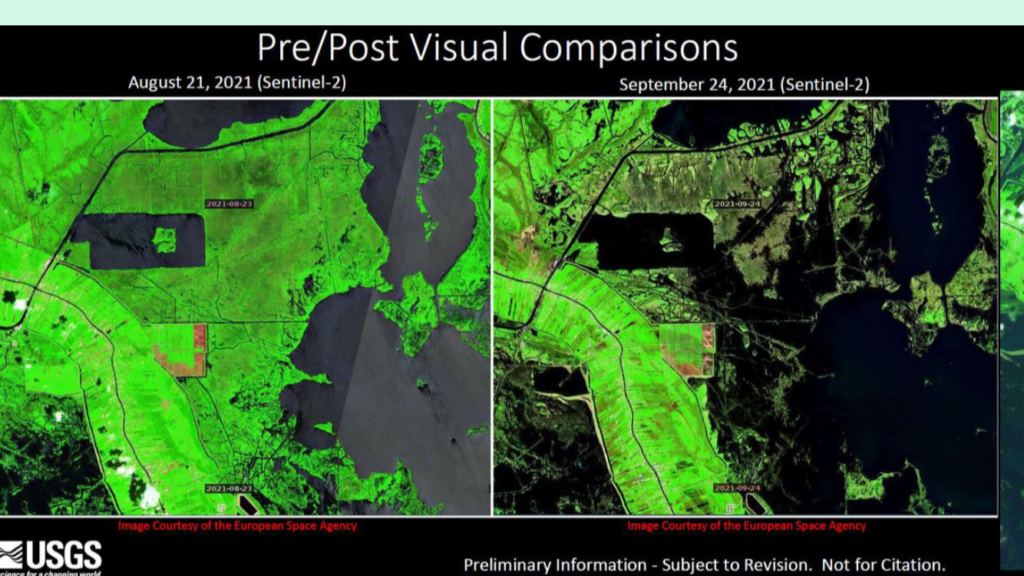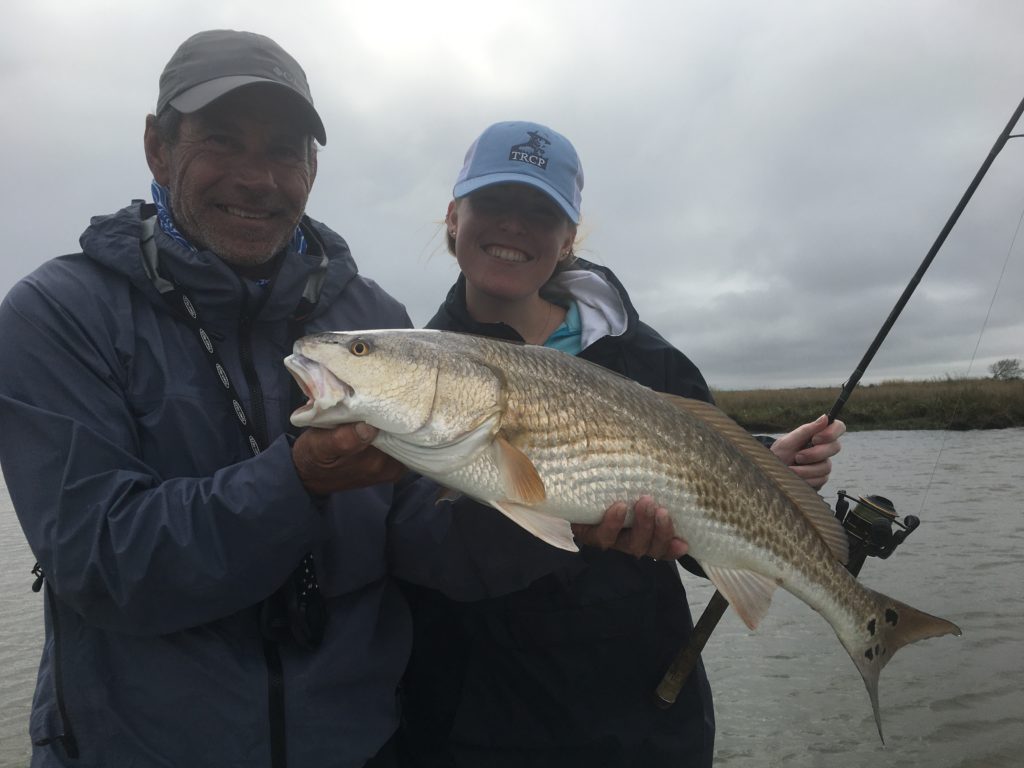How one national wildlife refuge created invaluable opportunities for hunters and anglers in the Pacific Northwest
Easily accessible from Seattle, Tacoma, and Olympia, the Billy Frank Jr. Nisqually National Wildlife Refuge in Washington state draws more than 200,000 visitors each year, including about 10,000 students. Its proximity to one of the Northwest’s largest urban hubs allows the refuge to provide abundant wildlife viewing opportunities to a wide range of people.
Among them each year are hundreds of sportsmen and sportswomen who come to the refuge to hunt geese, duck, and scaup during the fall and winter hunting seasons. In 2019, the Billy Frank Jr. Nisqually National Wildlife Refuge was among the 77 refuges and 15 hatcheries within the system wherein the U.S. Fish and Wildlife Service expanded hunting and fishing opportunities in what was—at that point—the single-largest increase of its kind in the refuge system’s history, adding 1.4 million acres of expanded access.
In many ways, the refuge demonstrates the importance of hunting to the National Wildlife Refuge System, the critical role that refuges play in offering public access to people from all walks of life, and the power of collaborative conservation work between a variety of stakeholders to benefit fish and wildlife.
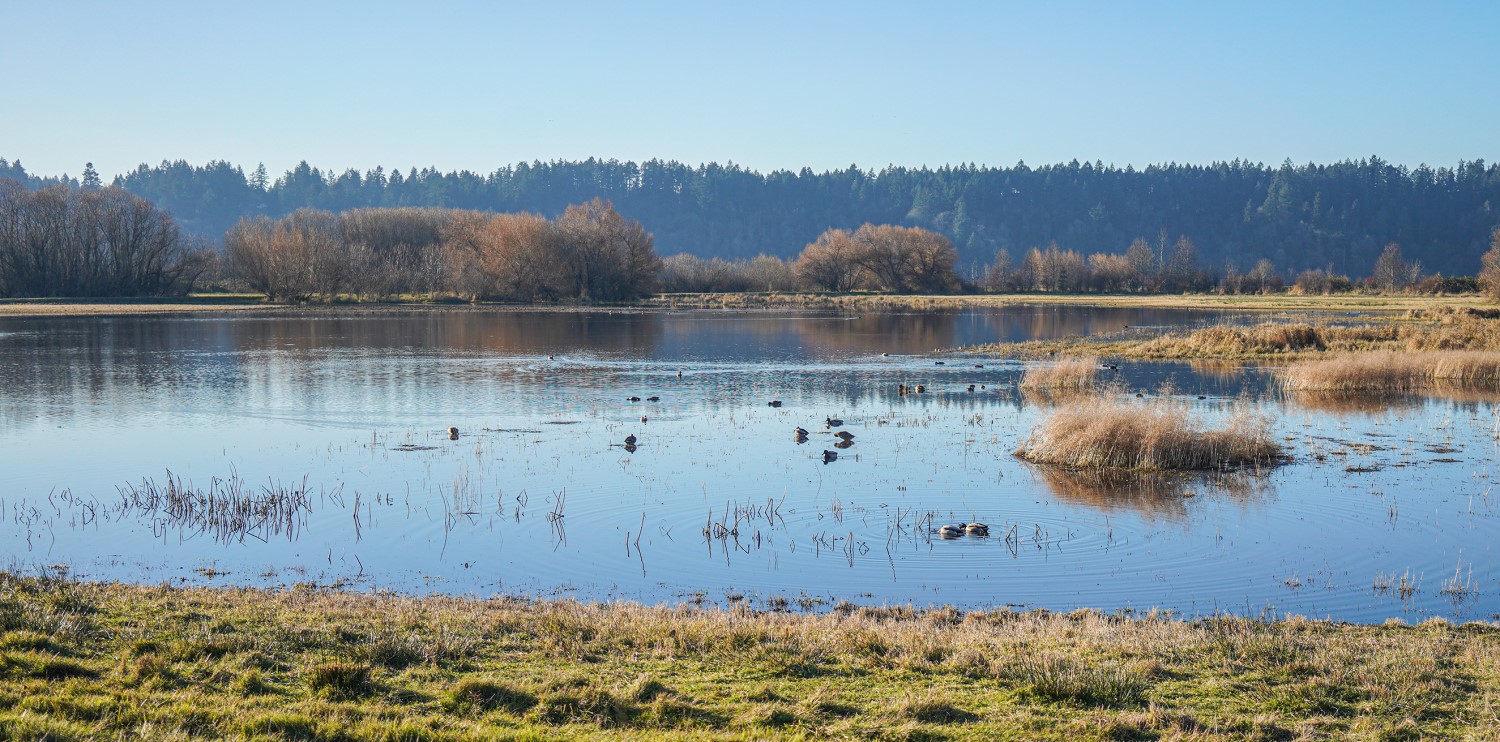
Establishing the Refuge
The Billy Frank Jr. Nisqually National Wildlife Refuge encompasses more than 4,500 acres around the delta of the Nisqually River, where glacial meltwater from the slopes of Mount Rainier flows into the southern end of Puget Sound. In this estuarine environment, saltwater and freshwater marshes, grasslands, mudflats, and forests provide habitat for salmon species and forage fish; waterfowl, songbirds, raptors, and shorebirds; and mammals like beavers, coyotes, deer, otters, and minks.
The Nisqually River Delta’s ability to support robust fish and wildlife populations was not always certain. In 1914, prior to the refuge’s establishment, a Seattle attorney named Alson Brown purchased more than 2,000 acres of land in the area and built a long dike to transform the estuary into farmable fields. Later, from the 1940s through the 1960s, the Ports of Tacoma and Olympia proposed dredging the site for a new, deep-water port to accommodate the larger and heavier ships developed for maritime trade.
Events during the 1970s resulted in a different future for the Nisqually River Delta. In 1974, the persistent efforts of the Nisqually Indian Tribe, the state of Washington, landowners, and local environmental advocates led the Department of the Interior to purchase 1,295 acres of the delta for the purpose of establishing a national wildlife refuge. That same year, a federal district court ruled in the case of United States v. Washington: what is now known as the Boldt Decision reaffirmed the treaty rights of Washington tribes and established tribes as co-managers of salmon and other fisheries with the state. Now, as co-managers, the Nisqually Indian Tribe started to look closely at the Nisqually watershed and the salmon habitat in the river.
In 1996, the Nisqually River flood overran Alson Brown’s old dikes, inundating some areas of the refuge. In turn, the refuge sought funding to assess the feasibility of removing the dikes and restoring the delta. The dikes ran in a loop that served as a hard border around the outer parts of the refuge, inhibiting both the natural meandering of McAllister Creek and the Nisqually River as well as the exchange of water between the creek, the river, and Puget Sound. The removal of these impediments and the completions of some additional landscape modifications would reconnect historic floodplains and open up prime habitat for salmon, waterfowl, and other wildlife.
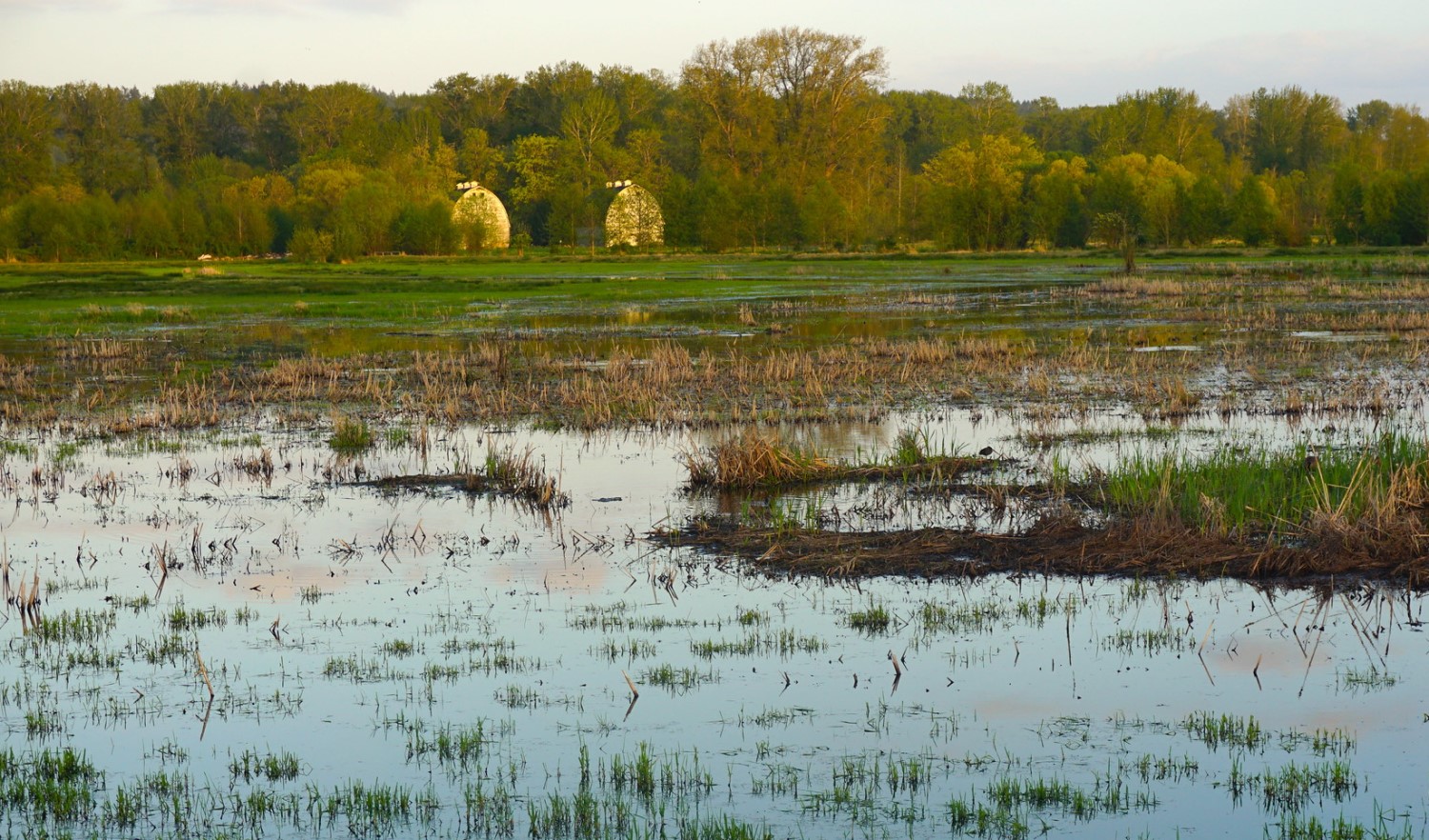
Restoring the Delta
In 2007, a group of partners that included the Nisqually Indian Tribe, the Nisqually National Wildlife Refuge, the U.S. Fish and Wildlife Service, the U.S. Geological Survey, and Ducks Unlimited launched the Nisqually estuary restoration project, the largest estuarine habitat restoration project in the Pacific Northwest.
The project secured public and private funds, including more than $1.8 million from the Puget Sound Acquisition and Restoration fund—co-administered by the Puget Sound Partnership and the Washington State Recreation and Conservation Office—pooled together by different watershed groups that contributed to the project; federal salmon project funding; and private funding raised by Ducks Unlimited.
Over the course of two years, from 2008 to 2010, the Nisqually estuary restoration project removed six miles of dikes and roads to restore more than 750 acres. Afterwards, aerial photos showed a thousand branching channels and sloughs running through the tidal marsh across the refuge, providing important habitat for Chinook salmon, steelhead, and bull trout, as well as a variety of other fish and wildlife.
The expansion of the tidal marshland also affected the number and type of birds that visited or inhabited the refuge, and the composition of waterfowl at the refuge has changed—there are more wigeon and estuarine waterfowl now than before. This development, in addition to the post-restoration decision to allow hunting on refuge lands adjacent to Washington Department of Fish and Wildlife hunting areas, has created a large stretch of accessible and productive hunting land at the refuge.
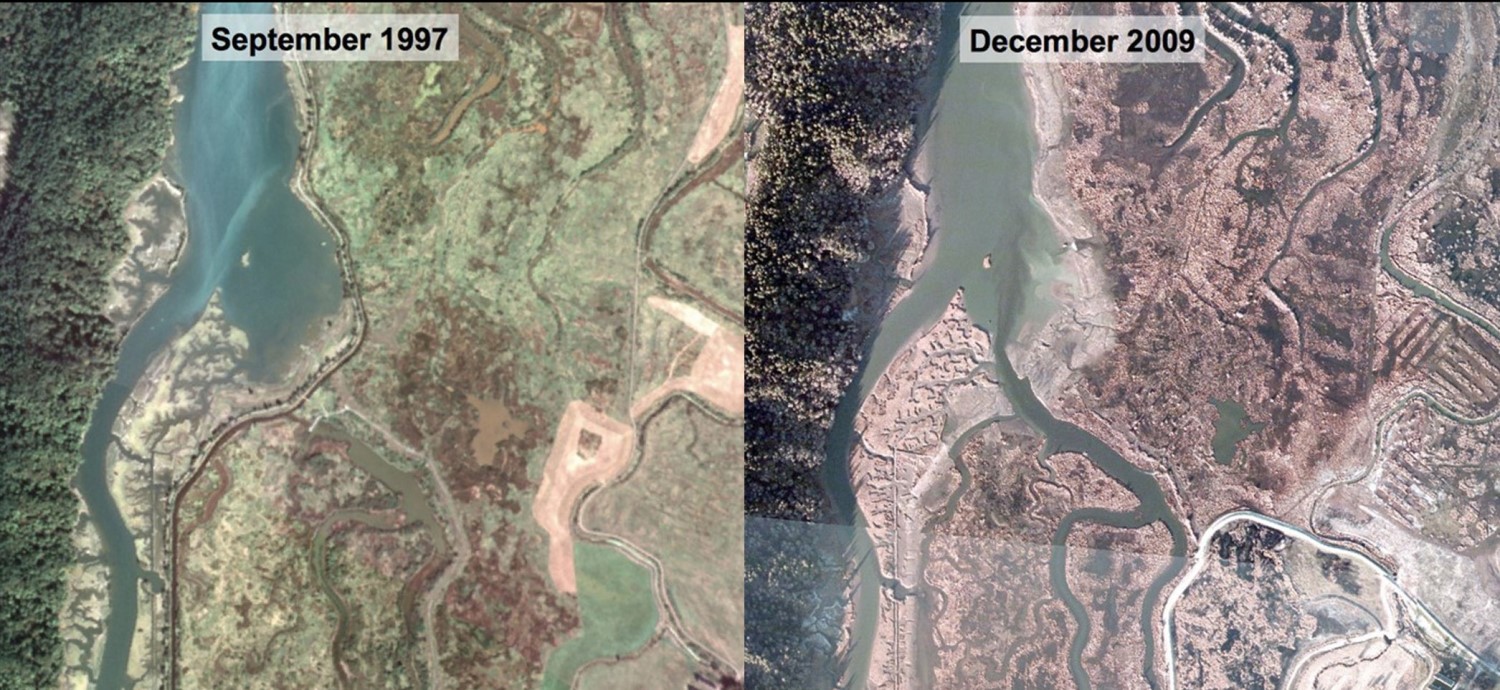
Opportunity for All
Prior to the 2019-2020 hunting season, the refuge expanded the area where hunting is permitted, opening more than 1,100 acres of waters and tideland for waterfowl hunting. The refuge is open to hunting for more than 100 days per season, stretching from mid-October to the beginning of February.
Cody Raffensberger and Tyler Klump, two hunters who came out to Nisqually National Wildlife Refuge on the opening day of the 2021 waterfowl season, said hunting at the refuge appeals to them for different reasons. Raffensberger, who has hunted at Nisqually 15 times over the last three years, said he appreciates the accessibility of the refuge and the convenience of the boat launch at Luhr’s Landing. “There’s a good number of birds here, and the population stays year-round,” Raffensberger said.
It was Klump’s first time hunting at Nisqually, and he said he enjoyed the experience. “The places I normally go, they’re a lot more compact, with pre-built lines and things like that, and usually a lot more crowded,” he said. “Here, you can kind of get out on your own and check out better areas. This was the best day of duck hunting I’ve had.”
Greg Sullivan, another hunter who came out to Nisqually on the opening day of the 2021 waterfowl season, explained that he likes the hunting at the refuge because it offers more than just mallards, snow geese, and teal ducks. “I love that, no matter what, every time I come here, I’m going to see something interesting even if it’s not something that I’m going to hunt,” he said. “For example, there’s a group of at least six eagles in this area that’s always really cool to see. There’s a lot of marine wildlife and a good variety of waterfowl—that’s all interesting.”
These types of experiences and observations reveal some of the unique values of the refuge system, which provides all Americans with quality experiences in the field and on the water, conserves biodiversity, and sustains habitat connectivity for fish and wildlife. Looking ahead to the future of the system, sportsmen and sportswomen can point to the establishment and restoration of the Billy Frank Jr. Nisqually River Wildlife Refuge as an example of a collaborative, locally supported effort where hunters and anglers came together with other stakeholders in what can only be described as a conservation success story.
Kevin Hyde is the communications specialist for the Puget Sound Partnership, the Washington state agency that leads the region’s collective effort to restore and protect Puget Sound. He enjoys hiking and camping throughout the Pacific Northwest.
Top photo: USFWS Pacific via Flickr

